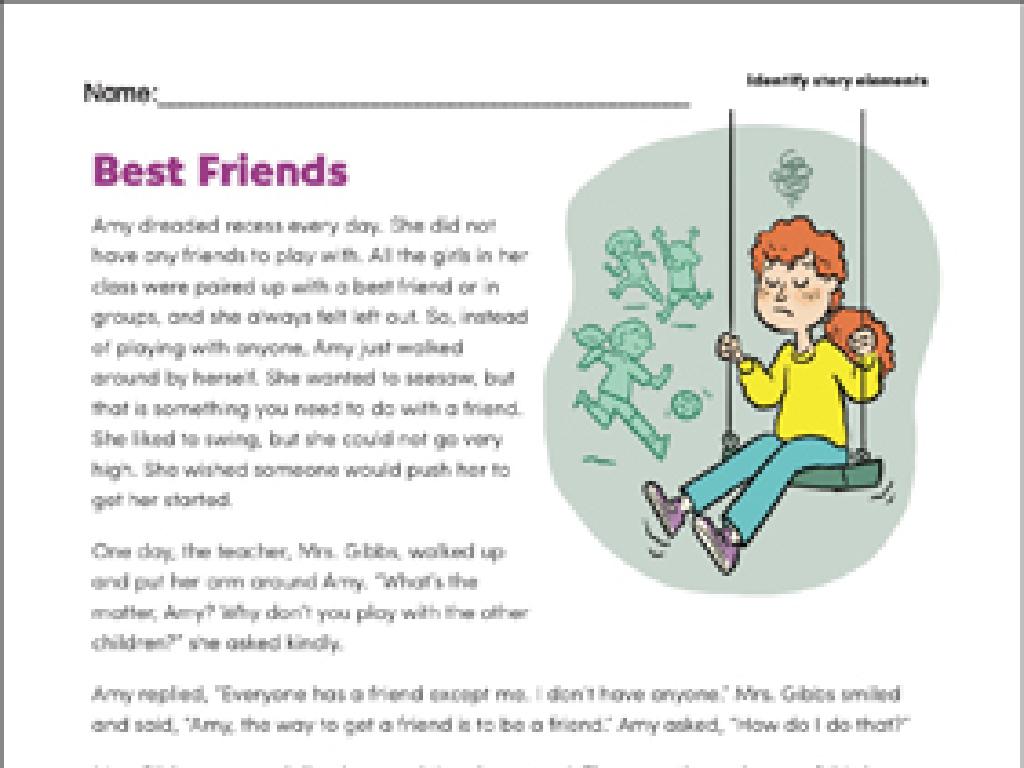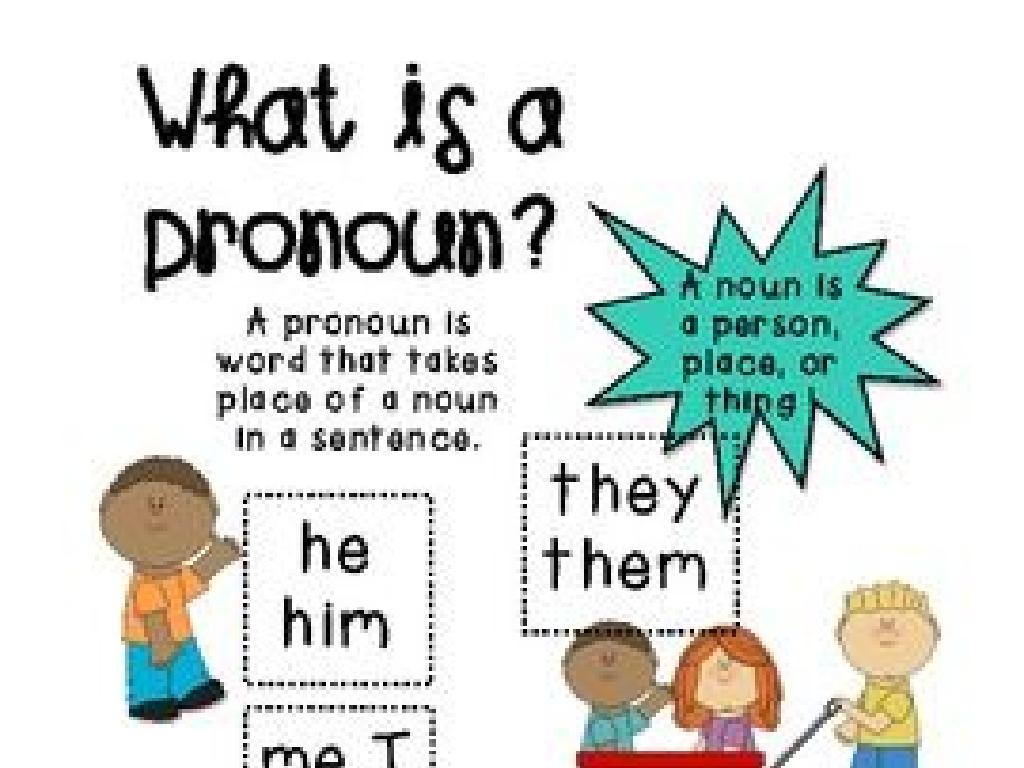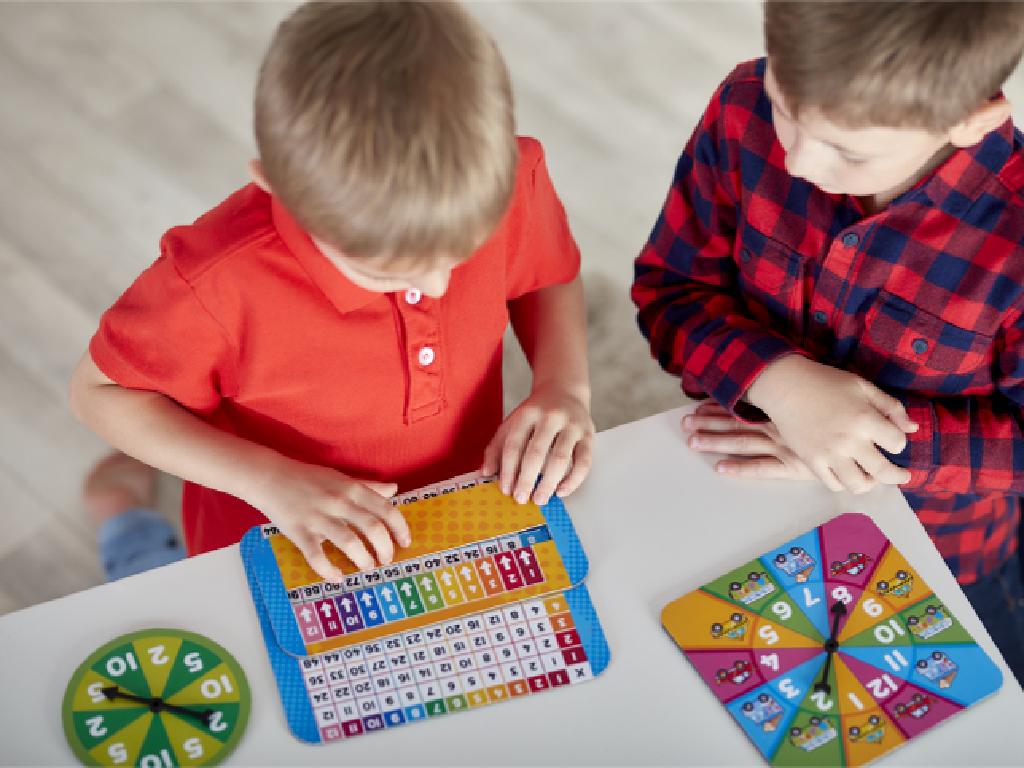Frequently Confused Letters: Find The Letter
Subject: Language arts
Grade: First grade
Topic: Letter Identification
Please LOG IN to download the presentation. Access is available to registered users only.
View More Content
Welcome to Letter Land!
– Play ‘Find the Letter’ game
– Learn about similar-looking letters
– b and d, p and q – they can be tricky!
– Understand letters to read and write better
– Recognizing each letter helps with reading
– Practice makes perfect readers and writers
|
This slide introduces the ‘Find the Letter’ game to help first graders distinguish between commonly confused letters. Emphasize the importance of recognizing the differences between similar-looking letters, such as ‘b’ and ‘d’ or ‘p’ and ‘q’, as it is crucial for their reading and writing development. Engage the students with this interactive game where they will identify and differentiate letters within words and sentences. Provide plenty of examples and encourage them to practice regularly, as this will reinforce their learning and help them become proficient readers and writers.
Meet the Letters: Spot the Difference!
– Letters that look alike
– Focus on ‘b’, ‘d’, ‘p’, ‘q’
– These letters can be tricky, they are like letter twins!
– Learn tricks to differentiate
– Remember ‘b’ has a belly, and ‘d’ has a diaper. ‘p’ is a plate, and ‘q’ is a queen with a crown.
– Practice with fun activities
– We’ll draw and play games to remember each letter!
|
This slide introduces students to commonly confused letters and provides visual tricks to help them differentiate between ‘b’, ‘d’, ‘p’, and ‘q’. Emphasize the importance of recognizing the orientation of each letter. Use engaging language and visual aids like drawing a belly on ‘b’ or a diaper on ‘d’ to make the learning process fun and memorable. Incorporate hands-on activities such as letter drawing contests or matching games to reinforce the concepts. The goal is to help students confidently identify each letter in isolation and within words.
Learning Letters: ‘b’ and ‘d’
– ‘b’ has a belly in front
– Imagine ‘b’ with a round belly sticking out.
– ‘d’ has a bottom behind
– Think of ‘d’ as having a round bottom sitting down.
– Hand shapes for ‘b’ and ‘d’
– Use your hands to form the letters in the air.
– Practice writing ‘b’ and ‘d’
– We’ll draw these letters on paper together.
|
This slide is designed to help first graders differentiate between the commonly confused letters ‘b’ and ‘d’. Emphasize the visual differences by comparing ‘b’ to having a ‘big belly’ in front and ‘d’ as having a ‘big bottom’ behind. Engage the students by having them make the shapes of ‘b’ and ‘d’ with their hands, which reinforces kinesthetic learning. Follow up with a practice session where students write the letters ‘b’ and ‘d’ on paper, ensuring they understand the distinction. Encourage them to come up with words that start with ‘b’ and ‘d’ and to share with the class.
Letter Buddies: ‘p’ and ‘q’
– ‘p’ has a tail going down
– ‘q’ is like ‘p’s mirror with a tail
– Practice drawing ‘p’ and ‘q’ in the air
– Use your finger to trace ‘p’ and ‘q’ like we learned
– Can you spot ‘p’ and ‘q’ around you?
– Look for ‘p’ and ‘q’ in your books or classroom
|
This slide is aimed at helping first graders differentiate between the commonly confused letters ‘p’ and ‘q’. Emphasize the direction of the tail for each letter, with ‘p’ having a tail that descends below the line and ‘q’ having a tail that also goes down but mirrors ‘p’. Encourage the students to practice by drawing the letters in the air with their fingers, which helps with muscle memory. Ask them to find and point out these letters in their environment to reinforce recognition. This kinesthetic activity supports visual learning and helps solidify the concept in a fun and interactive way.
Practice Time: Spot the Letter!
– Practice finding ‘b’, ‘d’, ‘p’, ‘q’
– Look for ‘b’, ‘d’, ‘p’, ‘q’ in different words
– Identify these letters in words
– I’ll show words, you spot the letter
– Ready for a matching game?
– We’ll match letters to pictures and words
|
This slide is for a classroom activity focused on helping first graders distinguish between commonly confused letters such as ‘b’, ‘d’, ‘p’, and ‘q’. Start by showing words and having students identify the specific letters. Then, move on to a matching game where students match letters to corresponding pictures and words, reinforcing their recognition skills. For example, match ‘b’ with a ball, ‘d’ with a dog, ‘p’ with a pen, and ‘q’ with a queen. This interactive approach helps solidify their understanding through play. Prepare a variety of words and images for the matching game to cater to different learning paces and ensure every student is engaged and learning.
Story Time: Letter Hunt
– Read a story as a class
– Spot ‘b’, ‘d’, ‘p’, ‘q’ in the story
– These letters can be tricky, look carefully!
– Raise your hand when you see them
– Let’s see who finds the most!
– Keep count of how many you find!
|
This activity is designed to help first graders distinguish between commonly confused letters by turning it into a fun and interactive game. As you read the story aloud, students will be on the lookout for the letters ‘b’, ‘d’, ‘p’, and ‘q’. Remind them to pay attention to the shape and orientation of these letters. Encourage them to raise their hand each time they spot one of the letters. This will help them to visually differentiate between these letters in a practical context. At the end of the story, you can discuss how many times each letter appeared and praise the students for their attentiveness. This activity not only aids in letter recognition but also enhances listening skills and concentration.
Letter Craft with Playdough
– Create ‘b’, ‘d’, ‘p’, ‘q’ with playdough
– Roll, shape, and compare the letters
– Use different colors for each letter
– Blue for ‘b’, red for ‘d’, green for ‘p’, yellow for ‘q’
– Visual and tactile learning aid
– Reinforce letter recognition
|
This activity is designed to help first graders differentiate between commonly confused letters by engaging in a hands-on letter crafting exercise. Using playdough, students will create the letters ‘b’, ‘d’, ‘p’, and ‘q’, which are often mixed up due to their similar shapes. Assign different colors to each letter to enhance visual discrimination. This tactile experience reinforces letter recognition and aids memory through active participation. Encourage students to touch and manipulate the shapes to understand the differences between the letters. As an extension, students can create words starting with these letters or even form them into fun shapes or objects that begin with the respective letters.
Class Activity: Letter Hunt Adventure
– We’re going on a letter hunt
– Find objects starting with ‘b’, ‘d’, ‘p’, ‘q’
– Look for ‘ball’, ‘dog’, ‘pen’, ‘quilt’
– Write down your finds on the board
– Let’s see who can find the most!
|
This interactive activity is designed to help first graders distinguish between commonly confused letters by associating them with objects. Before starting, explain how some letters, like ‘b’ and ‘d’, can be tricky because they look similar. Demonstrate the shape of each letter with your hands or with visual aids. Then, have students search the classroom for items that begin with each letter. As they find objects, such as a ‘ball’ for ‘b’ or a ‘dog’ for ‘d’, they’ll write the word on the board. This will help them remember the sound each letter makes. Encourage teamwork and make sure every student participates. After the hunt, review the list as a class and praise their efforts. This activity not only reinforces letter identification but also enhances vocabulary and spelling skills.
Letter Hunt Success!
– Congratulations on your hard work
– Mastering ‘b’, ‘d’, ‘p’, ‘q’
– These letters can be tricky, but you did it!
– Practice with letter crafts at home
– Use your crafts to remember how each letter looks
– Keep the learning going!
|
This slide is a celebration of the students’ achievements in distinguishing between commonly confused letters. It’s important to praise their effort and encourage them to continue practicing. Remind them to use the letter crafts created in class as a fun way to reinforce their learning at home. Suggest that parents engage with their children in identifying these letters in everyday reading materials. Reinforce the concept that practice is key to mastering these letters and that they should feel proud of their progress.






